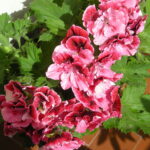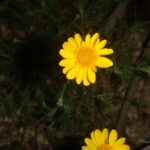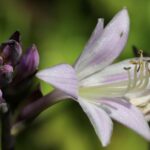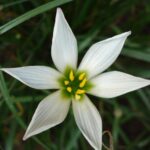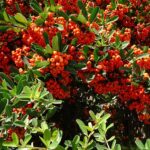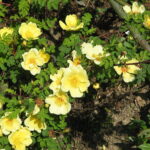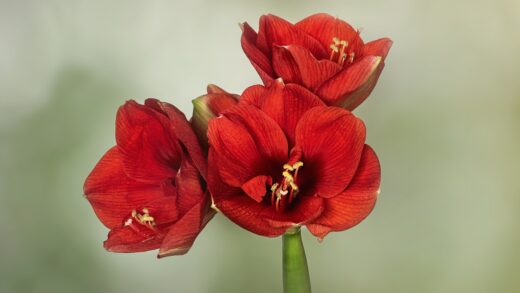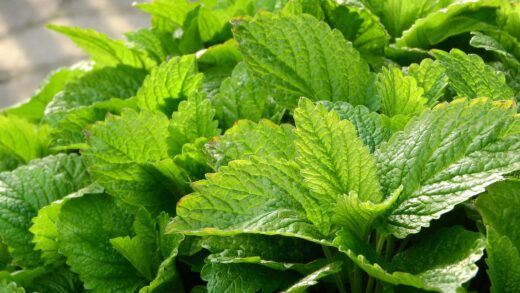Pruning and cutting back the black-eyed susan vine

Pruning the black-eyed susan vine is a simple but important horticultural practice that helps to maintain the plant’s health, manage its size, and encourage a more prolific and attractive floral display. As an exceptionally fast-growing vine, Thunbergia alata can quickly become a tangled mass of stems if left to its own devices. Strategic cutting back at the right times directs the plant’s energy towards producing more flowers and creating a fuller, more well-behaved plant. While not strictly necessary for the plant’s survival, regular pruning and deadheading are key to maximizing its ornamental potential.
The primary goals of pruning this vine are to control its vigorous growth, promote bushier branching, and remove any dead or damaged stems. By pinching back the growing tips, especially early in the season, the gardener encourages the plant to send out more lateral or side shoots. This results in a much denser, fuller plant with a greater number of stems, which in turn leads to a higher potential for flower production, as blooms are formed on new growth. This simple technique can transform a potentially straggly vine into a lush curtain of foliage and flowers.
Another essential aspect of maintaining the plant is deadheading, which is the practice of removing spent or faded flowers. Although some modern cultivars are self-cleaning, many varieties will benefit from this task. Deadheading serves two important purposes: it improves the plant’s appearance by keeping it looking tidy, and more importantly, it prevents the plant from setting seed. By removing the old flowers before they can produce seeds, the plant’s energy is redirected into producing more blooms, thereby extending the flowering season.
Pruning may also be necessary for health reasons or for renovation. Any stems that appear broken, diseased, or are infested with pests should be removed promptly to prevent problems from spreading. Furthermore, a major cutback is a key part of the process for overwintering the plant indoors, reducing its size to a manageable state for its winter dormancy. Understanding when and how to make these cuts is fundamental to good vine management.
Pruning for shape and density
The most effective pruning for shaping the black-eyed susan vine and encouraging a dense habit begins when the plant is young. When the seedlings or young plants have developed several sets of leaves, pinching out the very tip of the main growing stem is highly beneficial. This simple act removes the apical dominance of that stem, stimulating the growth of dormant buds located at the leaf nodes further down the stem. These buds will then grow into new lateral branches.
More articles on this topic
This initial pinching creates a bushier, multi-stemmed plant from the base, which provides a much fuller appearance as it begins to climb. This process can be repeated on the new side shoots once they have grown a few inches long. This early-season management sets the foundation for a well-structured plant that will cover its support more effectively and produce a greater overall number of flowers. It is a small effort that pays significant dividends in the plant’s final appearance.
Throughout the growing season, a light, ongoing pruning can be performed to maintain the desired shape and size. Any stems that grow too far outside the desired area or begin to look unruly can be trimmed back. This is also a good opportunity to guide errant stems back onto their support structure, preventing the vine from becoming a tangled mess. This type of maintenance pruning can be done at any time during the active growing season.
When making pruning cuts, always use clean, sharp pruning shears or scissors to ensure a clean cut that will heal quickly. Make the cut just above a leaf node. A new shoot will often emerge from the bud located at that node, so consider the direction in which you want the new growth to go. This selective pruning allows the gardener to have a significant degree of control over the vine’s final form.
The practice of deadheading
Deadheading, the removal of spent flowers, is a crucial task for prolonging the bloom period of the black-eyed susan vine. Once a flower has been pollinated, the plant’s focus shifts from producing more flowers to developing seeds within the faded bloom. This process consumes a significant amount of the plant’s energy. By removing the faded flower before it has a chance to set seed, the gardener tricks the plant into continuing its flowering cycle.
More articles on this topic
The process of deadheading is simple. Inspect the vine regularly, at least once or twice a week, and locate any flowers that have started to fade, wilt, or close up. These can be removed by pinching them off with your fingers or by using a small pair of snips. It is best to remove not just the flower petals but the entire flower head, including the small swollen base where the seeds would form.
While deadheading can seem like a tedious task on a plant that produces so many flowers, it makes a noticeable difference in the quantity and duration of the blooming season. It keeps the plant looking neat and fresh, preventing the unsightly appearance of dead and decaying flowers mixed in with the vibrant new ones. For vines grown in highly visible locations, such as in hanging baskets or containers on a patio, this attention to detail significantly enhances their aesthetic appeal.
It is important to note that if seed collection is desired for propagation in the following year, a few flowers should be left on the plant to mature and develop seed pods. These pods will turn from green to brown and become dry as they mature. Once fully dry, the seeds can be harvested and stored in a cool, dry place for next season’s sowing. However, for maximum flower display, the vast majority of spent blooms should be removed.
Cutting back for overwintering and rejuvenation
A more substantial pruning, or cutting back, is required when preparing the black-eyed susan vine for overwintering indoors. As an enthusiastic grower, the vine will have reached a considerable size by the end of the summer, making it impractical to bring the entire plant inside. In the autumn, before the first frost, the vine should be pruned back hard.
Using clean pruning shears, cut the stems back by at least half to two-thirds of their length. This drastic reduction in size makes the plant much more manageable to house indoors. It also reduces the amount of foliage the root system needs to support during the low-light winter months, helping the plant to conserve energy and survive its dormancy period. This hard pruning may seem severe, but the plant is resilient and will produce fresh new growth from the remaining stems in the spring.
This type of hard pruning can also be used for rejuvenation purposes on perennial plants in warm climates. If an older vine has become woody at the base with sparse growth, a hard prune in late winter or early spring can stimulate the growth of new, vigorous shoots from the base, effectively renewing the plant. This removes the old, less productive growth and encourages a fresh flush of healthy stems that will flower profusely.
When performing a hard prune, it is a good opportunity to clean up the plant thoroughly. Remove any dead, weak, or tangled stems from the base of the plant. This not only improves the plant’s appearance but also enhances air circulation around the crown of the plant, which can help to prevent fungal diseases. After pruning, the plant is well-positioned for a healthy start, whether it’s for its indoor dormancy or the beginning of a new growing season outdoors.
📷 Forest & Kim Starr, CC BY 3.0, via Wikimedia Commons








